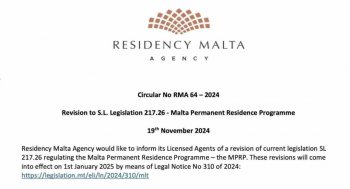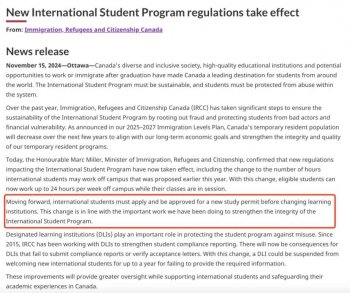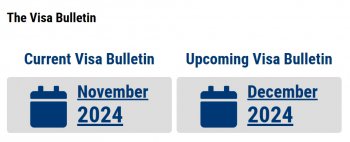
兆龍移民獨家編纂 轉載請注明出處
英文原文:
Good afternoon. It is very nice to see so many of you in person. I look forward to meeting you after the engagement. The 90 or so of you in this room are joined by about 900 other stakeholders on our phone lines. Before we begin, I’d like to take a few minutes and introduce members of IPO who will join me today in our meeting. They are our Deputy Chief Julia Harrison, and our Division Chiefs Lori Melton and Karen Karas, who oversee the adjudicators and Jan Lyons, who leads our economists.
I’ll start today by looking back at Fiscal Year 2014, which for us ran October 1, 2013 – September 30, 2014. I’m sure many of you will agree that in a number of ways it was a particularly noteworthy year for the EB-5 Program. With respect to the administration of the Program, we’ve settled in our new space which is much more conducive to workflow and file storage, and as of September 30, all of the EB-5 related form types are worked by IPO. Throughout the year we made an enormous effort to recruit, hire and train very capable and motivated staff to adjudicate EB-5 related petitions and applications. At the end of the fiscal year, IPO was 83 strong and was supported by 13 Fraud Detection and National Security (FDNS) employees and 11 attorneys with USCIS’s Office of Chief Counsel (OCC). Today, IPO stands at 94 strong and we are working to bring onboard another 10 individuals in the near future, while enjoying the same level of direct support from FDNS and OCC as in FY 2014.
Second, the EB-5 Program itself experienced unprecedented growth. The number of approved regional centers grew to almost 600, an increase of nearly 230 in the prior fiscal year. As the Director mentioned, we received nearly 11,000 I-526 petitions within the fiscal year that represented investments in a great number and wide variety of projects - from large construction projects to mining operations to the entertainment industry. The 11,000 petitions equaled more than a quarter of the petitions that have been received since the Program’s inception in 1990. As a result, for the first time the Program used its allocation of approximately 10,000 visas, which became unavailable as we closed out the fiscal year.
Third, USCIS undertook a fairly comprehensive review of its regional center population to determine continued eligibility through the review of the Forms I-924A that were submitted by each regional center active at the end of FY 13. As a result, USCIS terminated seven regional centers for failure to file a Form I-924A.
This year, USCIS also issued 28 Notices of Intent to Terminate (NOITs) to regional centers that no longer served the purpose of promoting economic growth. We are reviewing responses received and will take any appropriate final actions in the coming months.
In addition, IPO has recently issued a web-alert to remind all approved EB-5 regional centers with a designation letter on or before September 30, 2014, that they must file Form I-924A, no later than December 29, 2014.
In preparation for this engagement, we received several advanced questions. One of the questions mentioned the need for a revision to the Form I-924A. Actually, both Form I-924 and I-924A are currently open for public comment. If you have any suggestions for how we can improve the forms, feel free to visit the Federal Register and leave a comment. We have the exact link to the website in the slide presentation, if you wish to jot it down.
Before we begin to look prospectively at FY 2015, I’d like to spend a few minutes on Program related statistics from FY 2014. As mentioned, we received nearly 11,000 petitions from individual investors (Form I-526), we also received more than 270 applications or amendments to regional centers (Form I-924) and more than 2,500 petitions to remove conditions (Form I-829). This represents a significant increase in receipts for each form type from the prior fiscal year: more than 72% for Form I-526, nearly 34% for form I-924 and more than 106% for Form I-829 and. At the close of FY 2014, our processing time for the EB-5 form types stood at 14.3 months for Form I-526, 6.8 months for Form I-829 and 8.5 months for Form I-924.
Now, I’d like to turn to FY 2015. This fiscal year, the staff and I have developed an operational plan that will guide our work, measure our progress and help keep our collective eye on the ball. We felt this is something that was really needed so we could communicate our priorities to agency and departmental officials, members of Congress and all of you.
Two of our priorities are primarily internally focused: maintaining a strong infrastructure and ensuring that we continue to develop our workforce, so I won’t spend a lot of time today discussing them. I would note however, that with respect to both, we want to continue to attract, retain, and develop top talent. This has become especially critical as the complexity and size of the projects that we see continue to increase.
In terms of what I’ll call our initiatives that are more operational in nature, there are three general areas where we will focus our efforts: improving customer service and outreach, providing high quality services, and strengthening program integrity. I plan to spend a few minutes discussing a component or two under each one of these areas.
For customer service and outreach, we will continue to hold quarterly stakeholder engagements and provide timely responses to the thousands of inquiries we anticipate receiving this year. We plan to expand the number of engagements and Julia will discuss an upcoming effort in a few minutes. However, one new effort will consist of IPO personnel traveling to different locations across the country to meet with our Federal, state, and local government partners in those areas to help them better understand the EB-5 Program and to establish relationships with those partners. We also plan to schedule outreach events in the area while we are there.
With respect to high quality services, we will strive to get our forms within processing times, while maintaining a high level of quality in all of our adjudications and communications. This is going to be challenging for us, but we are going to make every effort to achieve this goal. We just came off a month where we strived to exceed 1,000 actions and we finished with 1,048. We currently have 40 non-supervisory adjudicators on board with 4 more to come and 17 non-supervisory economists. Our latest group of 15 adjudicator hires has completed training and mentoring and has started making significant contributions. We are pleased with our progress and I expect to see I-526 processing times coming back down in the near future.
Part of the initiative to provide high quality services is to issue well timed guidance and one example of that is guidance on retrogression. USCIS is aware of the impact visa retrogression may have on the EB-5 Program and we are working internally to prepare policy guidance on several related issues. We will share in a few minutes our initial thoughts in response to several questions we received in advance on this topic.
Finally, we are seeking to further strengthen program integrity in the coming year. Program integrity is something that is vital to all of our interests. For us, it continues to be a top priority to collaborate with law enforcement and prevent fraud as we develop new ways to further enhance confidence in the Program.
In the year ahead we plan to expand our use of site visits, both domestically and abroad to validate supporting documentation. We will expand upon our regional center compliance reviews, bringing in new government and commercial data sets to validate the information provided with the I-924A filings.
Our FDNS team will continue to expand in size and receive additional training in combatting money-laundering and international banking crime to enhance their knowledge and capabilities. They have acquired new software tools to assist them in building cases and will continue to acquire more tools of the trade. However, maintaining program integrity is not something that we can do alone, it requires your assistance. You may encounter incidences of fraud, misrepresentation, and other unlawful behavior that negatively impact the Program. Whether it be from a prospective partner, investor or just something you see on the internet, I encourage you to let us know by sending an email to our mailbox – so that we can work with our partners to investigate this behavior.
I’d like to now update you on a two new developments and then we’ll open it up for some questions First, as you may know, parts of the Program are being reviewed by the GAO -- the Government Accountability Office. For those who may not know, the GAO is an agency within the legislative branch that conducts audits at the request of congressional members. This particular audit was requested by Ranking Members Chuck Grassley of the Senate Judiciary Committee, Tom Coburn of the Senate Homeland Security Committee and Bob Corker of the Senate Committee on Foreign Relations. The objectives of the review, which began last month, are to look at program fraud risks and related mitigation strategies used by the Program, as well as the validity and reliability of methodologies used to determine job creation and economic benefits. GAO also plans to look at the study that USCIS has asked the Department of Commerce to conduct on the economic impact of the EB-5 Program. GAO anticipates issuing a final report sometime late next summer, and we look forward to working with them on this.
Second, I wanted to provide a short update on the Commerce study. We recently signed an agreement for Commerce to complete the study. We met with Commerce as recently as last week and we expect them to finish the study by November 2015.
Finally, we’d like to spend some time this afternoon discussing the USCIS Electronic Immigration System, also known as -ELIS and more generally the manner in which new projects are submitted by existing regional centers. As you may know, USCIS ELIS went live last year for some USCIS forms. In fact, we worked with our Office of Transformation Coordination to hold two webinars on the EB-5 related forms and functions last fiscal year. For the FY 2014 we received 21 Form I-526 applications, filed through ELIS. To date, in FY 2015, we have received 14 Form I-526 applications. However, we have not seen the amount of usage we have hoped for. We were hoping to see approved I-924 exemplar projects submitted through the document library - but only one regional center has done this.
For those of you unfamiliar with it, the document library works by allowing regional centers to upload a previously approved project’s documents that have been given deference, which we call a deal package in ELIS. Once the deal package is uploaded, it allows the regional center to send its immigrant investors a link to these documents so the investors can download a one page attestation document that takes the place of all of the deference documents. The immigrant investor can use the attestation document in the paper submission of their I-526 petition, as well as the electronic submission. This attestation makes it less cumbersome for investors to file, because they will only include the signature page of their personal agreements with the attestation.
In addition to the reduced paperwork, the document library will give potential immigrant investors the assurance that deference will be given to all project-related evidence during the course of adjudicating their petitions, in the absence of material change, fraud, willful misrepresentation, or a legally deficient determination.
Yet we’ve noticed in processing applications and petitions that regional centers continue to submit new projects through I-526s rather than through a regional center, or I-924, amendment. Please know, though, that submitting new projects through I- 526s can cause unintended effects that that can result in longer processing times. For example, when we find project-related issues that are submitted only on I-526s, we have to issue RFEs to each investor; and then each investor has to address the same deficiencies with the project on an individual basis. We’ve also seen instances where significant, material changes to the project-related documents were made in response to the RFE, and these changes ultimately made the investor ineligible at the time of filing.
In the coming months we may create a separate process flow for those projects that both request exemplar approval submitted via the I-924 application, and leverage the document library and its attestation feature. Even though the I-924 filing is still processed on paper, an approved project can create efficiencies across the board when it is uploaded in the document library.














